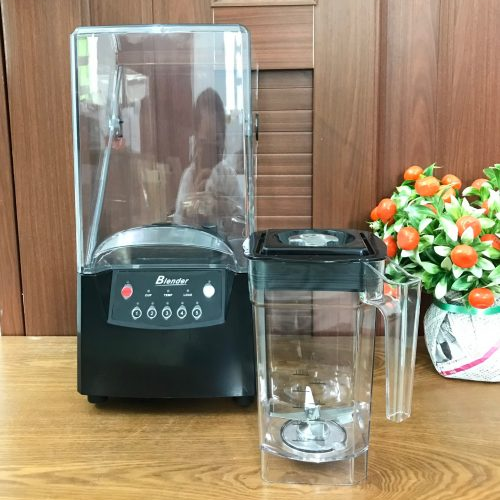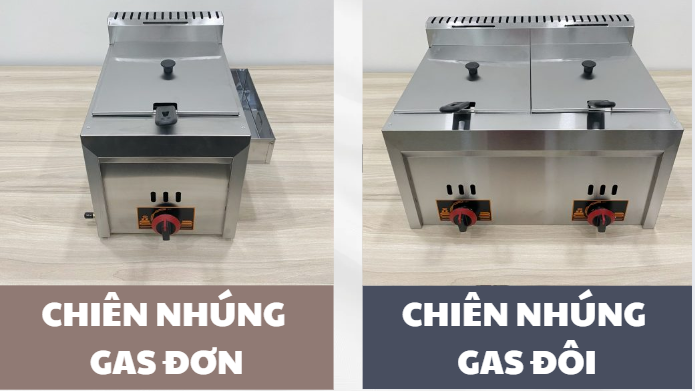Micro-targeted content personalization is the frontier of digital engagement, enabling brands to deliver highly relevant experiences at an individual level. Achieving this requires a sophisticated blend of technical infrastructure, advanced segmentation, tailored content creation, and automation protocols. This deep-dive examines each facet with actionable, step-by-step guidance, grounded in expert insights and practical examples. Whether you’re refining your existing personalization system or building one from scratch, this guide provides the precise techniques needed to elevate your strategy beyond the basics.
1. Understanding the Technical Foundations of Micro-Targeted Content Personalization
a) How to Set Up User Data Collection Infrastructure for Granular Segmentation
Start by implementing a robust data collection architecture that captures both explicit and implicit user signals. Use a combination of client-side and server-side tracking to ensure comprehensive coverage. For explicit data, integrate advanced forms and preference centers that allow users to self-identify segments (e.g., interests, roles). For implicit signals, deploy event tracking with tools like Google Analytics 4, Segment, or custom JavaScript snippets to capture page views, clicks, scrolls, and time spent.
| Data Type | Implementation Tips |
|---|---|
| Explicit | Use multi-select forms, preference centers, and account settings to collect user-declared attributes. |
| Implicit | Implement data layer scripts and event listeners; leverage tag managers for flexibility. |
b) Implementing Real-Time Data Processing Pipelines Using APIs and Event Tracking
Design a real-time data pipeline using event-driven architecture. Use APIs for data ingestion, such as RESTful endpoints that receive event payloads, and webhooks for external integrations. Employ a message broker like Apache Kafka or RabbitMQ to buffer and process streams efficiently. For processing, utilize serverless functions (e.g., AWS Lambda) to transform raw data into structured segments instantly, enabling immediate personalization.
Expert Tip: Prioritize low-latency pipelines that enable instant content updates. Test your data flow end-to-end with simulated user events to ensure no delay exceeds 200ms, preserving a seamless experience.
c) Ensuring Data Privacy and Compliance During Data Capture and Storage
Implement privacy by design: use encryption at rest and in transit, and anonymize PII where feasible. Deploy consent management platforms like OneTrust or Cookiebot to track user permissions, and implement granular opt-in/opt-out controls. Regularly audit data access logs and maintain strict role-based access controls. For compliance, ensure adherence to GDPR, CCPA, and other relevant regulations by documenting data flows and providing transparent privacy notices.
Legal Reminder: Always consult legal counsel to tailor your data handling practices to jurisdiction-specific requirements. Use Privacy Impact Assessments (PIAs) regularly to identify and mitigate risks.
2. Segmenting Audiences with Precision: Advanced Techniques
a) How to Define and Refine Micro-Segments Based on Behavioral Indicators
Identify a comprehensive set of behavioral indicators, such as purchase frequency, cart abandonment, content engagement, and session duration. Use clustering algorithms like K-Means or DBSCAN on normalized data to discover natural groupings. For example, segment users into “Browsers,” “Deal Seekers,” and “Loyal Customers” based on their browsing and purchasing patterns. Regularly update these segments with fresh behavioral data—monthly reviews are recommended to capture shifting behaviors.
b) Utilizing Machine Learning Models for Dynamic Audience Clustering
Implement supervised or unsupervised ML models using platforms like TensorFlow or scikit-learn. For dynamic clustering, deploy algorithms such as Gaussian Mixture Models or Hierarchical Clustering that adapt to evolving data. Use features like recent activity, content preferences, and engagement scores. Automate retraining pipelines with scheduled jobs (e.g., weekly) to keep segments current. For example, a B2B SaaS platform could dynamically group users by their feature adoption rate and usage intensity, enabling tailored onboarding flows.
c) Combining Demographic, Psychographic, and Behavioral Data for Hyper-Personalization
Create multi-dimensional profiles by fusing static demographics (age, location) with psychographics (values, interests) and behavioral signals. Use relational databases or graph data models (e.g., Neo4j) to map complex relationships. Apply matrix factorization or deep learning embeddings to uncover latent user preferences. This enables hyper-personalized content such as recommending industry-specific articles to a user’s niche interests or tailoring messaging tone based on psychographic profiles.
3. Developing Tailored Content Variations for Micro-Targeting
a) How to Create Modular Content Blocks for Different Micro-Segments
Design your content architecture around reusable modules—think of these as building blocks such as headlines, product showcases, testimonials, and calls-to-action. Use a component-based approach in your CMS (e.g., Contentful, Strapi). Tag each module with metadata indicating suitable segments. For instance, a “Luxury Product” block can be tagged for high-income segments, while a “Budget Deal” block targets price-sensitive users. This modularity facilitates quick assembly of personalized pages tailored to each micro-segment.
b) Implementing Conditional Logic in Content Management Systems (CMS)
Leverage CMS features like rules engines or conditional fields to serve different content variants dynamically. For example, in WordPress with plugins like Advanced Custom Fields or in Drupal with Paragraphs, set conditions such as “if user segment = ‘Tech Enthusiasts'” then display tech reviews and specifications; else show feature comparisons. Use JSON-based rules for flexibility, and test each rule set extensively to prevent content overlap or errors.
c) Using A/B/N Testing to Optimize Content Variations for Specific Segments
Implement multi-variant testing frameworks like Google Optimize or Optimizely with audience targeting filters. For each micro-segment, define hypotheses—for example, “Personalized CTA increases conversions.” Run parallel experiments with different headlines, images, or layouts. Collect detailed metrics such as click-through rates, time on page, and conversion. Use statistical significance thresholds to determine winning variants, and iterate rapidly to refine your personalization logic.
4. Automating Content Delivery at the Micro-Level
a) How to Configure Dynamic Content Rendering Using Personalization Engines
Utilize personalization engines like Dynamic Yield, Adobe Target, or open-source solutions such as OptinMonster. Integrate these tools with your website via SDKs or APIs. Define rules based on user segments, behavioral signals, or real-time data, and set up dynamic rendering rules—e.g., show different banners, product lists, or messages. Implement server-side rendering (SSR) for critical content to reduce latency, and ensure fallback content is always available for non-trackable users.
b) Setting Up Trigger-Based Content Delivery (e.g., Based on User Actions or Time)
Define triggers such as page scroll depth, time spent, specific button clicks, or cart abandonment. Use event listeners combined with a rules engine to serve targeted content immediately when triggers fire. For example, after a user views a product three times without purchasing, trigger a personalized discount popup. Use tools like Segment or Mixpanel to track triggers and automate responses through webhook integrations with your CMS or personalization platform.
c) Integrating Customer Relationship Management (CRM) and Marketing Automation Platforms
Sync your personalization system with CRM platforms like Salesforce or HubSpot to enrich user profiles with sales and support data. Use APIs to push real-time behavioral data into CRM, enabling dynamic segmentation and personalized outreach. Automate email campaigns, push notifications, and on-site messages based on user journey stages. For instance, trigger a tailored onboarding email sequence when a user completes a specific action, ensuring continuous, relevant engagement.
5. Practical Case Studies: Step-by-Step Implementation of Micro-Targeted Personalization
a) Case Study 1: E-commerce Site Personalizing Product Recommendations by Micro-Segments
An online fashion retailer segmented users into “Trendsetters,” “Budget Buyers,” and “Luxury Seekers” based on browsing and purchase history. Using a combination of event tracking and clustering algorithms, they built real-time profiles. Modular recommendation blocks were created for each segment, with conditional logic in their CMS to serve different product sets. They implemented A/B testing to refine recommendation algorithms, resulting in a 20% increase in conversion rates within three months.
b) Case Study 2: B2B Platform Delivering Industry-Specific Content Based on User Role and Behavior
A SaaS provider categorized users by industry vertical and usage patterns, dynamically adjusting the dashboard dashboard content. They employed machine learning to classify new users based on initial interactions, then served tailored onboarding tutorials and case studies. Automated triggers sent personalized emails with content aligned to user segment. This approach accelerated onboarding and increased engagement metrics by 15%.
c) Case Study 3: SaaS Product Customizing Onboarding Content for Different User Tiers and Usage Patterns
A SaaS company implemented a tiered onboarding process, where new users were segmented by subscription level and feature adoption speed. Using real-time data, they served customized tutorials and tooltips. Automated workflows adjusted messaging frequency and complexity, helping users reach their goals faster. Post-implementation analytics showed a 25% reduction in churn for new users and higher feature adoption rates.
6. Common Pitfalls and How to Avoid Them in Micro-Targeted Personalization
a) How to Prevent Data Silos and Ensure Data Consistency
Integrate all data sources into a unified data warehouse—use tools like Snowflake or BigQuery. Establish ETL pipelines that normalize data formats and update segments in real-time. Implement data validation routines and cross-reference user IDs across platforms to prevent fragmentation. Regularly audit data flows and reconcile discrepancies to maintain a single source of truth.
b) Avoiding Over-Personalization That Leads to User Privacy Concerns
Set clear boundaries for data collection and personalization scope. Use techniques like differential privacy and federated learning to minimize intrusive data gathering. Provide transparent user controls and highlight benefits of personalization, building trust. Regularly review personalization practices to ensure compliance and user comfort, avoiding the risk of alienating audiences with overly aggressive targeting.
c) Managing Content Complexity to Maintain Performance and Scalability
Design your content architecture to support modularity and lazy loading. Use CDN caching for static modules and optimize images and scripts. Monitor system performance metrics and set thresholds for content load times. When scaling, prioritize database indexing and consider microservices architecture for personalization logic to prevent bottlenecks. Regularly review personalization rules to eliminate redundancies and streamline processing.
- Mastering Micro-Targeted Content Personalization: From Technical Foundations to Practical Implementation 2025
- DỤNG CỤ PHÒNG KHÁCH SẠN CHUẨN 3 SAO GỒM NHỮNG GÌ?
- BÌNH HÂM CÀ PHÊ 8890: BÍ QUYẾT GIỮ HƯƠNG CÀ PHÊ THƠM ĐẬM ĐÀ
- How to Claim Skyhills No Deposit Bonus and Maximize Your own Payout
- How Visual Identity Shapes Player Engagement 04.11.2025

















 chat Facebook
chat Facebook Chat Zalo
Chat Zalo